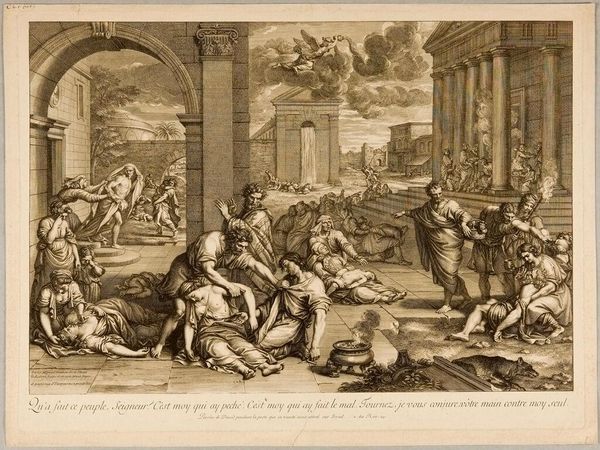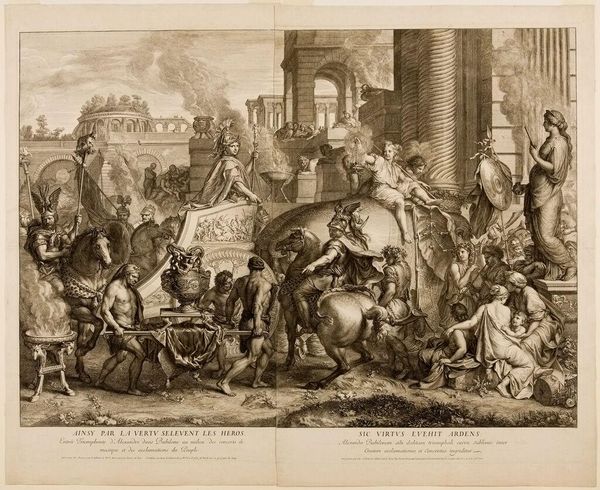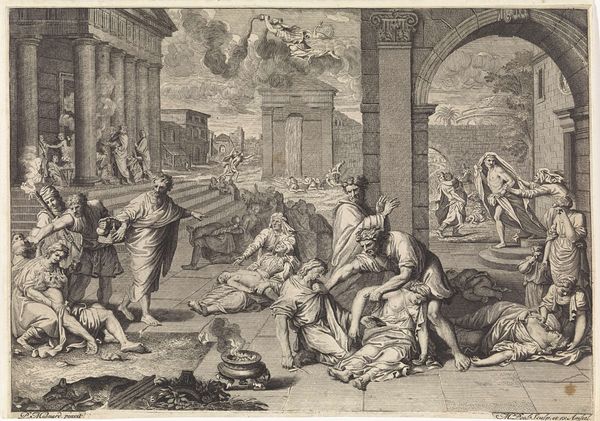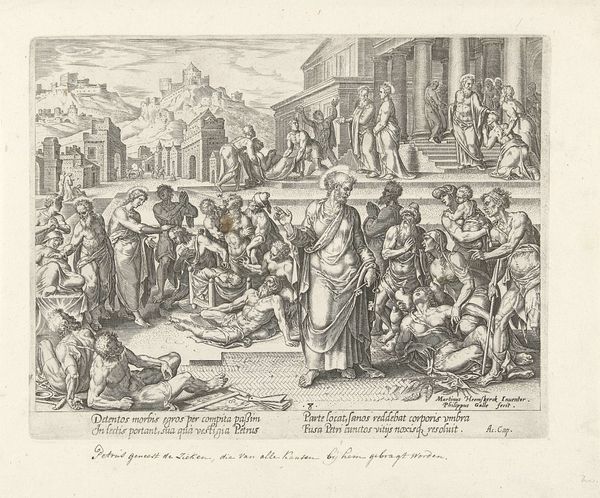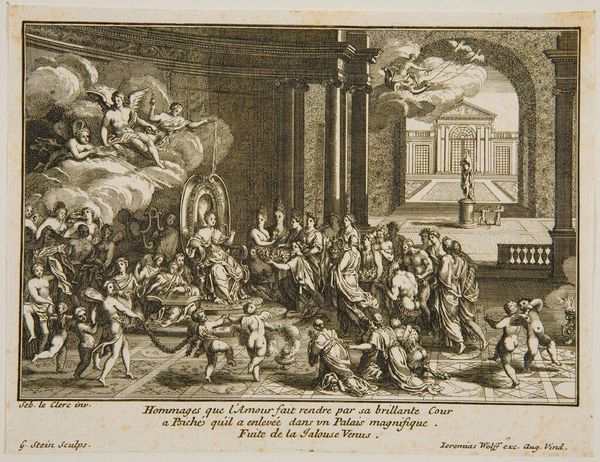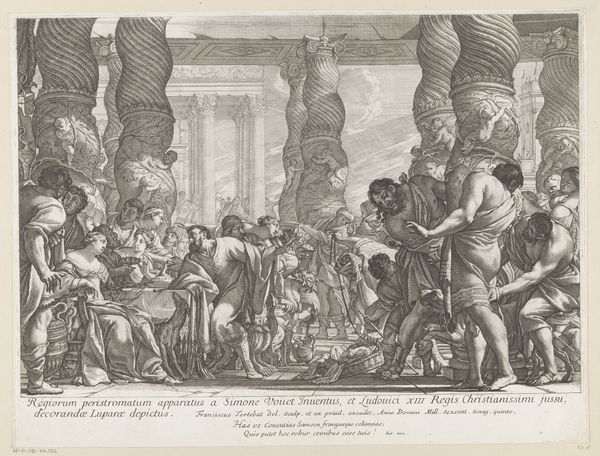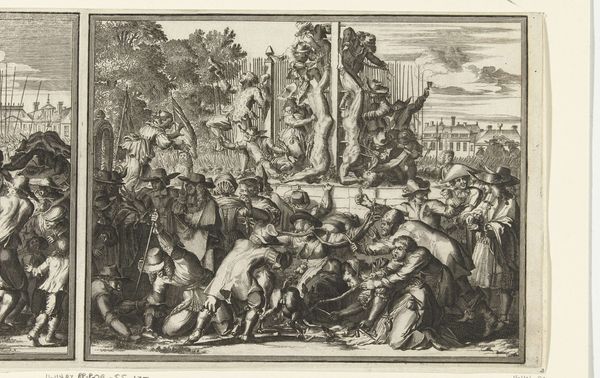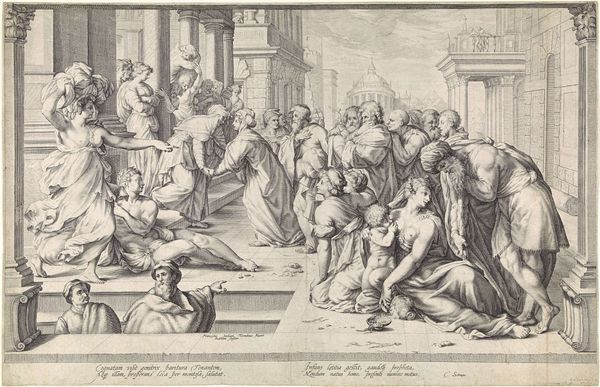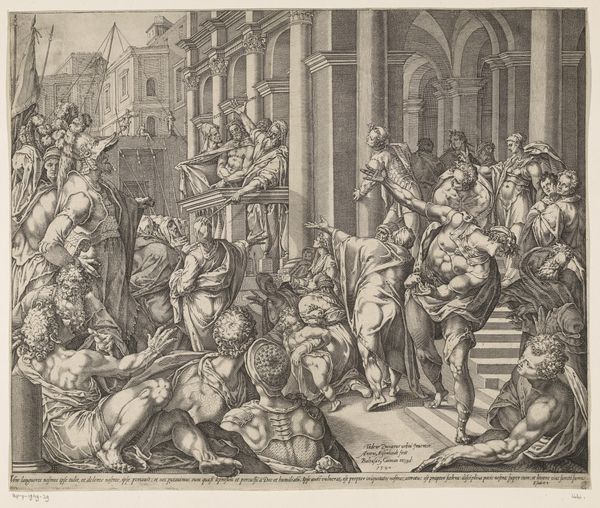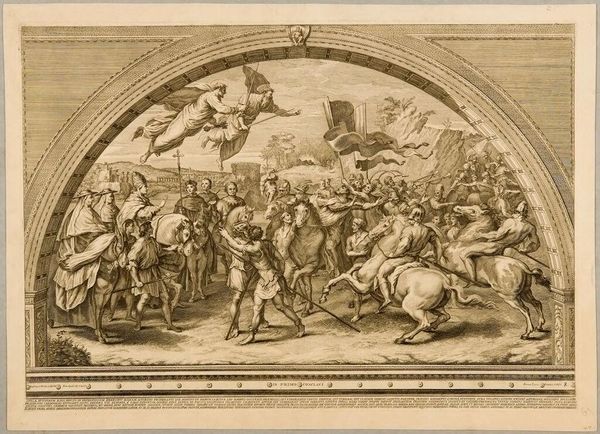
Plague of Aegina c. 17th century
Copyright: CC0 1.0
Curator: This is Gérard Audran's "Plague of Aegina," housed right here at the Harvard Art Museums. The scene is immediately striking—a stark rendering of suffering. Editor: Yes, the overwhelming sense is one of devastation, isn’t it? The composition is chaotic, figures strewn about, evoking widespread despair. Look at the postures, the lack of agency. Curator: The printmaking process itself, etching, allowed for the intricate detail you see in the figures and architecture. Consider the labor involved in producing such a work and its purpose for dissemination. Editor: Absolutely. And within that, we find the political resonance. The plague becomes a metaphor—a lens through which to examine social hierarchies, the vulnerability of populations, and the failures of leadership. Curator: It invites questions about who suffers most in times of crisis, and how power dynamics influence those outcomes. Editor: Indeed. Seeing the print through a contemporary lens reminds us that art can and should spark critical conversations. Curator: It’s certainly offered us a unique and challenging dialogue today. Editor: Precisely, a chilling yet poignant reflection on humanity.
Comments
No comments
Be the first to comment and join the conversation on the ultimate creative platform.
